VIDEO: Take a sneak peek inside a Townsville bee hive
A Heatley beekeeper has revealed the key to keeping his honey bees happy and thriving in North Queensland – including how to staying one step ahead of cane toads pests. See the video.

Townsville
Don't miss out on the headlines from Townsville. Followed categories will be added to My News.
What was meant to be a backyard hobby has expanded into a busy weekend job for one Heatley man, who now runs 10 hives across three suburbs – and swears a few stings a month keeps his arthritis away.
Donovan Newport first caught the beekeeping bug a decade ago when he was driving road trains out west.
“I was listening to the ABC radio and they were interviewing someone,” Mr Newport said.
“I grew up in the country around swarms of bees on a dairy farm and I thought that would be neat, to have your own honey.”
Soon, a hive arrived in Mr Newport’s Heatley backyard and word got out.
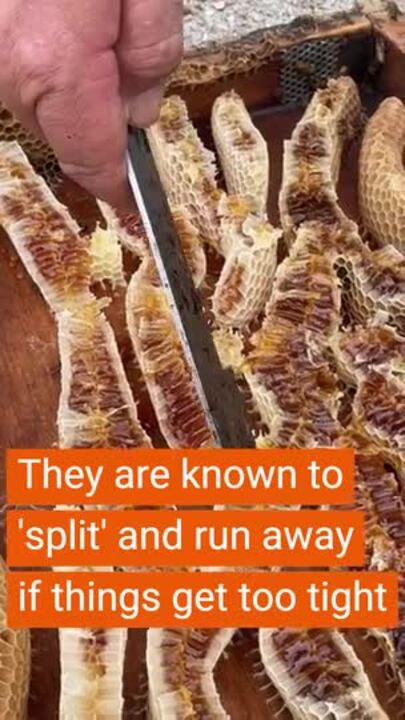
“A few people said, ‘I’d love to try some honey’, it kept going. I had to get move hives to meet the demand,” he said.
“I sell through friends and do pop-up stalls sometimes. I don’t advertise or do social media, but I have people constantly ringing me up for honey.”
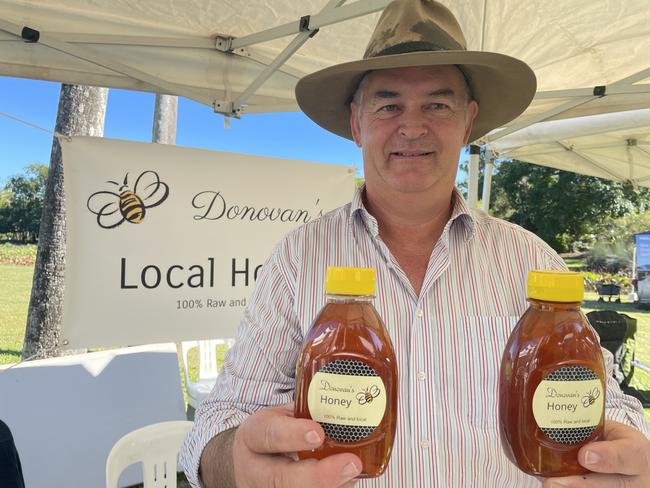
Mr Newport now works as a division manager at Nortrans, and cares for his 10 hives and hungry customers on the weekends.
Four of those hives are located on a vacant block inside the Mount St John industrial estate, covered by DIY rooves to keep the rain out, and lifted on chairs from the op-shop to keep cane toads out.
“Cane toads love honey bees,” Mr Newport said.
“They will actually stack up on top of each other trying to get to the hive.”

The Mount St John bees appear to be in a bare industrial complex, but their beekeeper says the hives feast on street trees “full of flowers”, weeds and the nearby Town Common.
He’s even spotted them 5km away in Pallarenda – Mr Newport can tell them apart by their unique colour.
“The bees can go 5km looking for flowers no problem. They can do 8km when pushed,” he said.
Alongside the four in Mount St. John, there are another four hives in Bluewater and two in Mr Newport’s backyard where they live alongside a large veggie garden and go crazy on pumpkin, cucumber and tomato flowers.
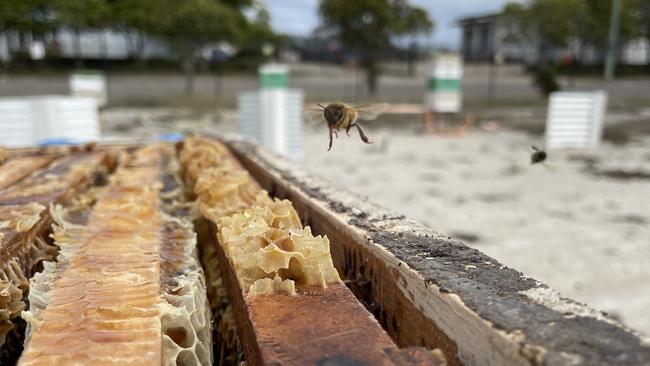
“I use Italian bees, which are known for being docile and hardworking. I either breed my own queens or buy locally so they are adapted to the weather up here,” he said.
“A bee lives about 40 days. The queen has the better end of the deal and can live two to five years, and she’ll lay 1500 to 2000 eggs a day.”
When a bee is born, it’s first job is to clean out the cell it grew up in, and then it gets put to work inside the hive cleaning, moving honey, and looking after the brood.
“Their last job is being a forager. They will go out and collect the nectar, bring it back in a honey sac, and give it to the hive bees. They will work until their wings fall off,” Mr Newport said.

“If you’ve got 2000 eggs being laid a day, you can imagine how many die each day too. Hives even have mortuary bees who’re responsible for taking dead bees out of the hive.”
Down south honey production enters hibernation during winter, but up here, the only thing standing in the way of all-year fresh honey is monsoonal and cyclonic weather knocking all the flowers from the trees.
“They can predict the weather. Three months out they will tell me if something big is coming,” Mr Newport said.
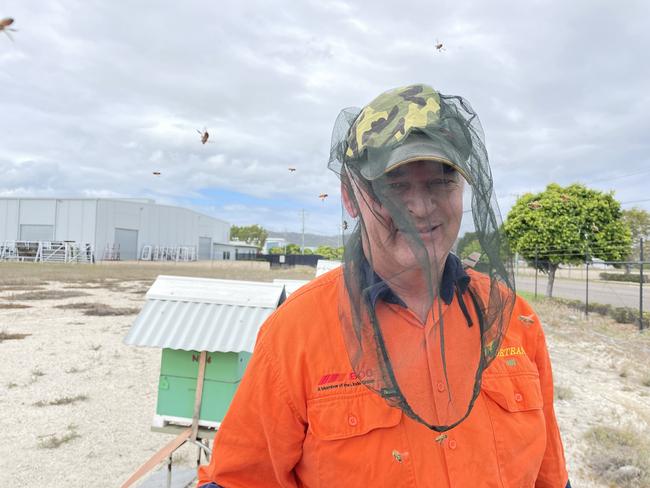
Last year, the hives went crazy storing away honey in the lead up to the big 2023-24 wet season and the direct category one cyclone hit, Mr Newport said.
Because of this, he lets the bees keep most of their honey stores as an insurance policy heading into summer.
“I only take a bit (of honey) at a time. Some people will rip it all out but I like to leave it in there. I even don’t mind getting stung because it helps with my arthritis,” he said.
After ten years of getting stung almost weekly, Mr Newport firmly believes the bee venom is helping his joints.
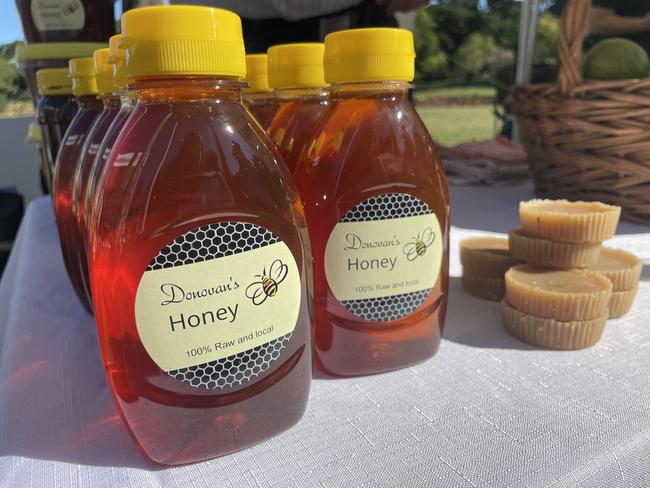
“Ten years ago I had bad arthritis, shocking pain in my hands,” he said.
“Ever since I took the bees on, no pain at all. It can reoccur if I don’t work on the bees for a month, so I try to be out here regularly.”
The Heatley man said beekeeping in Townsville has grown rapidly in the last few years.
“When the Townsville and District Beekeepers Association started, it had about 50 members,” he said.
“Now they have hundreds and hundreds. Every now and again I sell a hive to someone because they are so desperate to have one.”
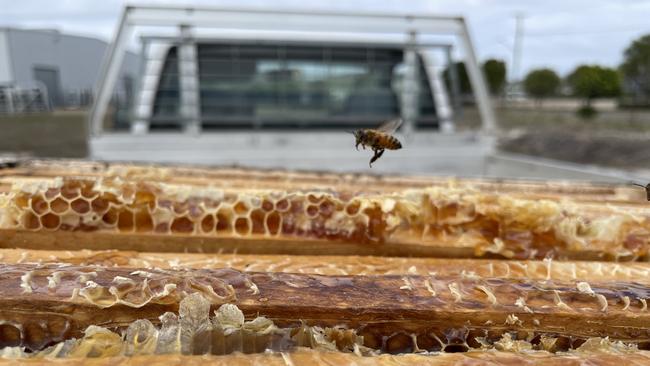
When asked about the encroaching threat of varroa mite, Mr Newman said it’s only a matter of time before the destructive honey bee pest reaches North Queensland.
Varroa mite was first detected in Australia around Newcastle in 2022, and has caused widespread hive destruction as biosecurity forces attempt to contain it.
In 2023, authorities announced it was “no longer feasible” to eradicate the deadly honey bee pest and declared it “established” in NSW.
“When it got into New Zealand, it nearly wiped out all the wild bees,” he said.
“It will get here too, and it will put a strain on everything because it takes a lot more work to keep the hives safe. I probably won’t be able to do this anymore when it arrives. I don’t know my future.”
More Coverage
Originally published as VIDEO: Take a sneak peek inside a Townsville bee hive





